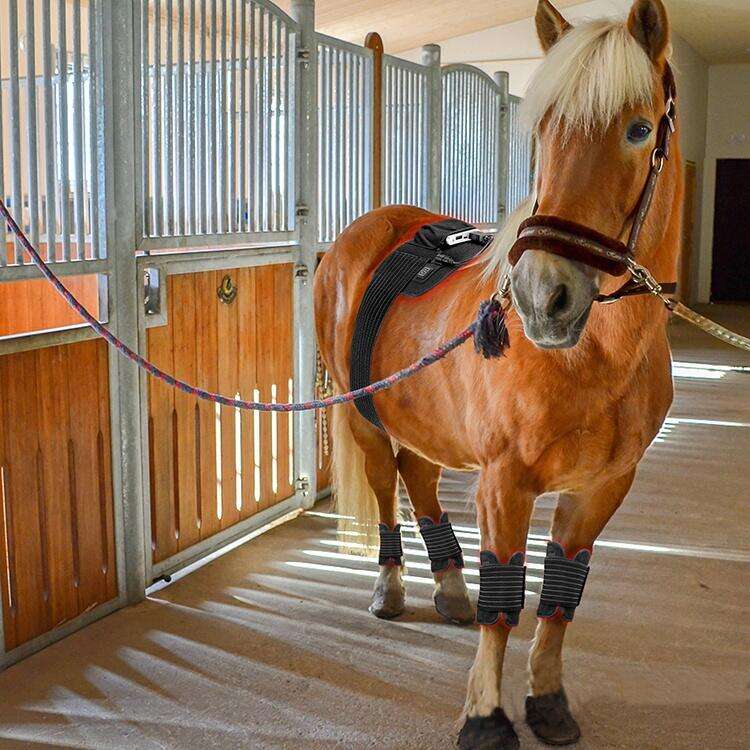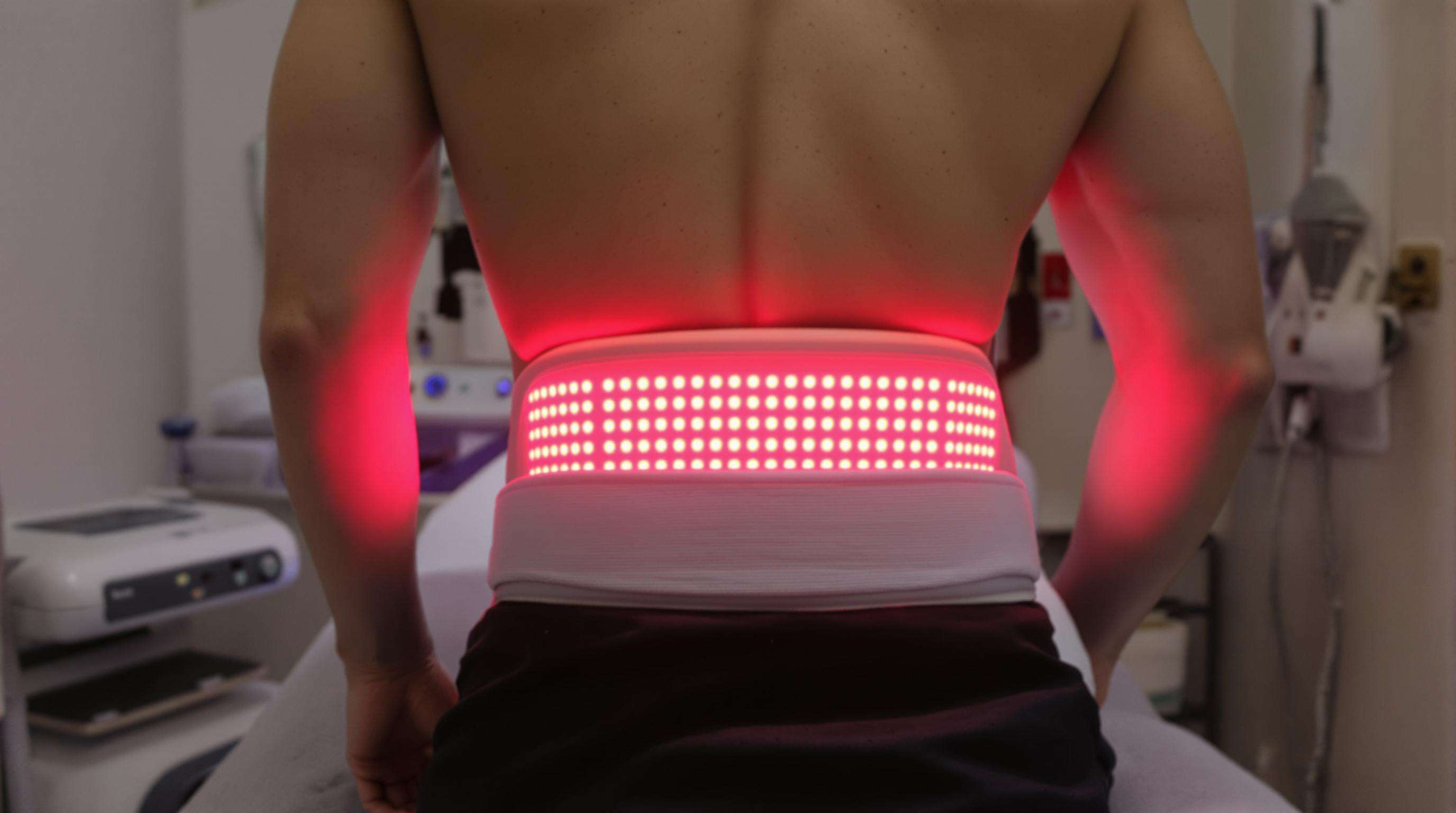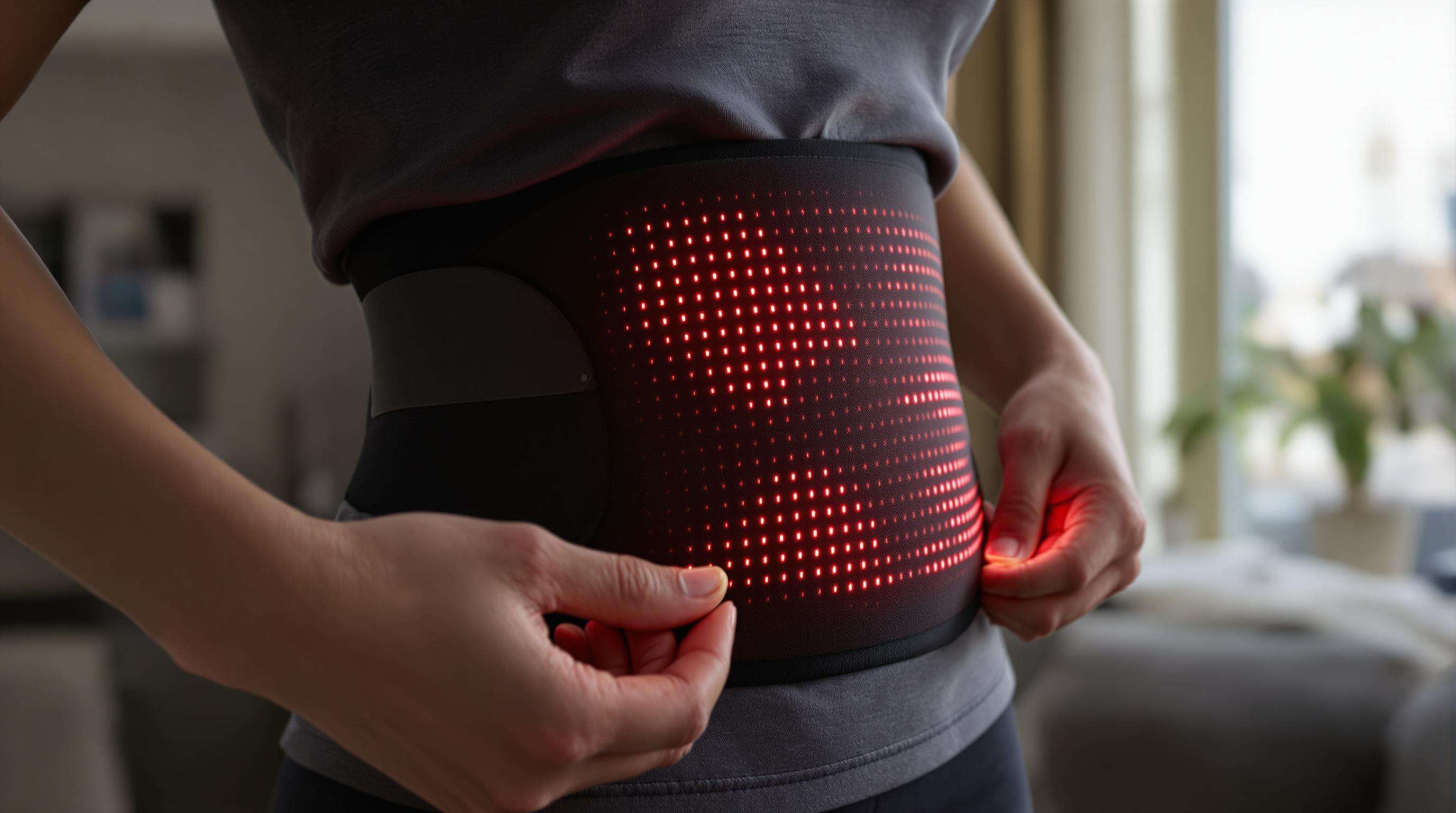
Shenzhen Junneeled Technology Co., Ltd.
Discover premium red light therapy panel, belt, pad, mask, and cap designed to enhance wellness and promote healing. Experience effective light therapy solutions.

Red light therapy belts emit different wavelengthsâ660nm (visible red light) and 850nm (near-infrared light)âwhich can penetrate into different depths of your skin. The 660nm light is for surface tissue treatment and the near-infrared 850nm penetrates deeper muscle and joints. These frequencies were shown to increase mitochondrial function by 150-200% speeding up the healing process with out producing any heat. This two-wavelength concept provides broad cellular support for healthy skin and healing tissues.
Red and near-infrared light enhance mitochondrial function by activating cytochrome c oxidase, a key enzyme in ATP production. This boosts cellular energy by up to 70%, supporting regeneration and reducing inflammation. For families, this translates to faster injury recovery and decreased reliance on pain medications.
Three PLEASers feature on a Ferrari: Located on the 3.9-litre twin-turbo V8 engine of the Ferrari Portofino, the three PLEASers are part of a paint sample which almost became standard but instead led to a new line of bespoke colours. The three PLEASers are a part of the pigment which coats the Ferrari and they include three red and white silver versions, with different versions of it being possible. Up to three of the cars can be ordered. Over 120 clinical trials approve red light therapyâs effectiveness, including a 2018 review in the Lancet showing an 83% reduction in pain in patients with arthritis. Today's belts are designed to emulate phsyicians' office conditions with a FDA-cleared (20-50mW/cm² irradiance), ensuring safe and efficacious use. The average daily user for six to eight weeks will allow for better elasticity of the skin, as noticed in improved muscle recovery and joint mobility.
Red light therapy belts provide a drug-free solution for localized pain, slow-healing injuries, skin aging, and muscle fatigue. Studies show 83% of users achieve measurable improvements within 8 weeks, making them versatile tools for households.
Chronic inflammation drives 50% of doctor visits annually. Red light therapy suppresses pro-inflammatory cytokines like IL-6 while improving circulation. In a 6-week trial, 72% of users reduced oral pain reliever use. The hands-free design allows treatment during daily tasks, ideal for arthritis or injury recovery.
Postoperative patients using red light therapy saw 40% faster wound closure compared to standard care. The 850nm wavelength boosts collagen production threefold, aiding recovery from burns, ulcers, or sports injuries.
Red light increases collagen density by 31% and elastin by 24% over 12 weeks, reducing wrinkles by 38%. Combined with antimicrobial blue light, it also improves acne outcomes. Daily 7-minute applications yield visible brightness and texture improvements in 89% of users.
Athletes using red light belts post-training experienced 52% less muscle soreness and 29% greater mobility. The 850nm wavelength clears lactic acid by enhancing ATP production, making it ideal for post-activity recovery.

Red light belts combine clinically validated wavelengths (660nm and 850nm) with ergonomic designs for targeted therapy during daily activities. A 2023 study found 78% of users achieved pain relief within 4 weeks, highlighting their efficacy.
Red light (630â660nm) benefits skin and muscles, while near-infrared (810â850nm) reaches joints and ligaments. These wavelengths increase blood flow by 30%, accelerating recovery. For example, 10-minute daily sessions reduced muscle soreness by 40% in athletes.
Modern belts feature adjustable straps, breathable fabrics, and auto-shutoff timers (5â20 minutes). Lightweight (<1.5 lbs) and rechargeable, they fit seamlessly into busy routines.
Leading brands use medical-grade LEDs matching clinic-level energy output (50â100 mW/cm²). FDA-cleared components and overheat protection ensure safe, reliable family use.
Dual-wavelength belts (red + NIR) improve cellular energy by 58% compared to single-wave devices. Choose adjustable models for versatility in treating skin, muscle, or joint issues.
Opt for lightweight (<1.5 lbs), water-resistant belts with flexible LED arrays. Rechargeable batteries should last 4â6 sessions per charge.
FDA-cleared belts adhere to strict irradiance limits (â¤200mW/cm²) and include auto-shutoff timers. Avoid non-regulated devices, as 32% of users overuse therapy without proper guidance.
Effective belts deliver â¥100mW/cm² power density and uniform irradiance across â¥150cm² treatment areas. Verify IEC 60601-1 certification for safety compliance.
Start with 5â10 minutes per area, gradually increasing to 15â20 minutes. Most studies recommend 3â5 weekly sessions for balanced results.
| Benefit Type | Onset | Full Effects Timeline |
|---|---|---|
| Acute pain relief | 2â3 sessions | 1â2 weeks |
| Chronic inflammation | 3â4 weeks | 8â12 weeks |
| Skin improvement | 4â6 weeks | 12â16 weeks |
| Muscle recovery | Immediate | 1â2 weeks |
Consistency is keyâ87% of users sustain benefits with 6â8 weeks of regular use.
Red light therapy belts are designed to provide a drug-free solution for localized pain relief, improving skin health, accelerating wound healing, and supporting muscle recovery.
It is generally recommended to use the therapy belt 3-5 times a week for optimal results, starting with 5-10 minutes per area and gradually increasing to 15-20 minutes.
Yes, red light therapy belts are safe, especially those that are FDA-cleared. However, it's crucial to follow the recommended usage guidelines and consult a healthcare professional if you have specific health concerns.
Results can vary depending on the condition being treated, but users may see improvements in pain relief after 2-3 sessions and more noticeable skin and muscle recovery benefits after several weeks.
While it is generally safe for most people, individuals who are pregnant or have photosensitive conditions should consult with their doctor before using a red light therapy device.